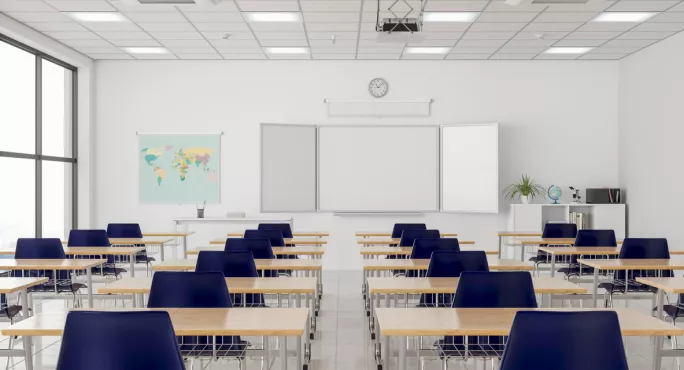- Home
- Schools may have to partially close, says top scientist
Schools may have to partially close, says top scientist

Ministers may be forced to close schools to older children if coronavirus cases continue to increase at the current rate, a scientist has warned.
Professor Neil Ferguson, whose modelling led to the original lockdown in March, said the NHS would soon be unable to cope unless the spread of the disease was stemmed.
He said there were currently 8,000 people in hospital with coronavirus - around a third of the peak earlier this year - and that numbers were continuing to rise.
Coronavirus: Union calls for secondary schools in high-risk areas to go on to rotas
U-turn: Masks to be worn in high-risk secondary schools
Circuit breaker: Independent SAGE says a short lockdown will save lives
“It is a worrying situation,” Professor Ferguson told the BBC Radio 4 Today programme yesterday.
“If the rate of growth continues as it is, it means that in a month’s time we will above that peak level in March and that is probably unsustainable.
“We are in a critical time right now. The health system will not be able to cope with this rate of growth for much longer.”
Coronavirus: Rota systems for secondary schools?
His warning follows the NEU teaching union’s call for the government to consider moving secondary schools on to rotas in high-risk areas.
Dr Mary Bousted and Kevin Courtney, the joint general secretaries of the union, have written to education secretary Gavin Williamson over concerns that the infection rate in secondary schools was “17 times higher than it was on 1 September”.
Moving secondary schools to a rota system is part of the Department for Education’s “worst-case scenario” planning for managing the spread of Covid-19.
It is the second tier of a system for schools for reducing the risk of the coronavirus in schools.
The third tier involves closing year groups in secondary schools and the fourth tier would be a return to a lockdown with all education settings staying open only for vulnerable pupils and children of critical workers.
However, Tes has revealed that even schools in high-risk and very high-risk areas for Covid are not being moved on to this second tier.
Instead, schools in these areas are in tier one of the school system - meaning masks need to be worn in communal areas of secondary schools.
Prof Ferguson’s warning came as South Yorkshire became the latest region to enter the tightest national tier 3 restrictions in England following Liverpool City Region, Greater Manchester and Lancashire.
He said it would be another week or two before it became clear whether the stricter measures would have an impact on case numbers.
Restrictions on households mixing should have a “significant effect”, according to Prof Ferguson, but he added that they may not be enough and further action may be needed.
“If we go beyond that, there is a limit to what we can do in terms of reducing contacts, short of starting to target, for instance, the older years in schools and sixth-form colleges where we know older teenagers are able to transmit as adults.
“Of course, nobody wants to start moving to virtual education and closing schools even partially. The challenge may be that we are not able to get on top of the transmission otherwise.”
Prime minister Boris Johnson is understood to be determined to avoid schools closing again because of the damaging effect on children’s wellbeing and education.
However, Professor Ferguson said that while there has been a slowdown in infections among 18- to 21-year-olds, they were continuing to rise in other age groups.
He previously warned in August that opening secondary schools in full could cause a second spike of the virus.
Ministers have said they hope the latest restrictions in England will slow the disease sufficiently to enable families to spend Christmas together.
Prof Ferguson said the government would have to assess the balance of risks when it came to deciding whether that was possible.
“It risks some transmission and there will be consequences of that. Some people will die because of getting infected on that day,” he said.
“But if it is only one or two days, the impact is likely to be limited. So that is really a political judgement about the cost versus the benefits.”
The latest figures suggest the number of new daily cases across England doubled in a fortnight - although some scientists have said the rate of spread may be slowing.
The Office for National Statistics infection survey estimated there was an average of 35,200 new cases per day in the community in England between October 10 and 16.
That was up 26 per cent from an estimated 27,900 per day for the period from 2 to 8 October and just over double the 17,200 per day from 25 September to 1 October.
The Scientific Advisory Group for Emergencies (Sage) said the Covid-19 reproduction number, or R value, for the whole of the UK had nudged down to between 1.2 and 1.4. Last week, it put the figure at between 1.3 and 1.5.
Keep reading for just £1 per month
You've reached your limit of free articles this month. Subscribe for £1 per month for three months and get:
- Unlimited access to all Tes magazine content
- Exclusive subscriber-only stories
- Award-winning email newsletters



